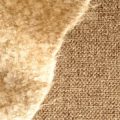Introduction to British Textile Heritage
Britain’s textile legacy is woven deep into the fabric of its culture, with centuries-old traditions shaping how homes are styled and comforted today. The story of British textiles begins in the rolling hills of Scotland and Yorkshire, where the world-renowned wools are spun and dyed, giving rise to iconic patterns like tartan and tweed. These materials have long been cherished in British households, not merely for their practicality but also for their symbolism—signifying warmth, resilience, and a strong sense of identity. From the stately country manors draped in rich plaids to the humble cottages adorned with hand-loomed throws, British textiles have played an integral role in creating spaces that invite relaxation and embody a quintessentially British sense of cosiness. As we explore how layering these timeless fabrics can transform your living environment, it’s essential to appreciate the heritage that makes them so enduringly beloved.
2. Selecting Textiles for Authentic Layering
When it comes to layering British textiles, the choice of fabric is absolutely crucial in achieving that signature balance of warmth, character, and tradition. The British Isles boast a rich textile heritage, and opting for quintessentially British fabrics can instantly elevate any space into a haven of comfort and style. Below is a quick guide to three iconic British textiles that are perfect for authentic layering:
| Fabric | Key Features | Where to Use | British Heritage Notes |
|---|---|---|---|
| Tweed | Durable, textured, often woven with earthy tones | Cushions, throws, upholstered armchairs | Originated in Scotland; traditionally used in country houses and estates |
| Herringbone | Zigzag pattern, smooth yet sturdy texture | Sofa covers, heavy drapes, accent blankets | Common in classic tailoring and rural interiors; timeless sophistication |
| Liberty Prints | Delicate floral motifs, vibrant colours on soft cotton or silk | Pillowcases, lampshades, decorative quilts | Synonymous with London’s Liberty department store; epitome of refined English charm |
The Art of Mixing Patterns and Textures
To truly capture the inviting essence of a British home, mix these fabrics thoughtfully. For example, pair a robust tweed throw with a herringbone cushion for depth and tactile contrast. Introduce Liberty print accessories to add a pop of colour and whimsy without overwhelming the room. The key is to blend textures and patterns while maintaining a cohesive palette inspired by the British landscape: think mossy greens, slate greys, heather purples, and soft creams.
Practical Tips for Choosing Fabrics
When selecting your textiles, consider their practical applications as well as their visual appeal. Choose wool blends for high-traffic areas due to their durability and natural resistance to wear. Opt for cottons or silks in quieter spaces where you want to highlight delicate patterns or softer textures. Always check the origin of your materials—locally sourced British fabrics not only support heritage industries but also ensure authenticity in your layered look.
A Nod to Sustainability and Tradition
Selecting genuine British textiles isn’t just about aesthetics; it’s also about honouring tradition and embracing sustainable choices. Many mills across the UK continue to produce tweed and other classic fabrics using time-honoured methods. By incorporating these into your home, you invest in quality craftsmanship while fostering a sense of continuity with Britain’s storied past.
![]()
3. Techniques for Layering Textiles in British Interiors
The Art of Combining Throws, Cushions, and Rugs
When it comes to creating a truly cosy British interior, the secret lies in how you layer your textiles. Start with a foundational piece, such as a classic wool or tartan throw draped over the back of a sofa or armchair. This instantly introduces warmth and sets a traditional tone. Next, add cushions in varying sizes and complementary patterns—think florals, checks, or understated tweeds—to introduce visual interest and depth. For authenticity, mix textures like velvet, linen, and chunky knits; this not only reflects British heritage but also adds tactile comfort.
Building Depth and Comfort
Layering isn’t just about piling on textiles—it’s about thoughtful placement. Arrange larger cushions at the back for support, then scatter smaller ones in front for layering effect. Throws can be casually folded at the foot of a bed or artfully crumpled in a reading nook to invite relaxation. Underfoot, introduce rugs in natural fibres such as wool or jute. In typical British homes with wooden or stone floors, overlapping area rugs creates both insulation and a sense of snugness during colder months.
Reflecting British Aesthetics
To achieve an authentic British look, select textiles that evoke local charm—think William Morris prints, Liberty fabrics, or handwoven Welsh blankets. Emphasise subtle, muted tones like sage green, navy blue, mustard yellow, and warm neutrals to mirror the British landscape and seasonal palette. The key is balance: too many bold patterns can feel overwhelming, so combine statement pieces with plain or textured counterparts to maintain harmony. This approach ensures your space feels inviting yet sophisticated—a hallmark of classic British interiors.
4. Colour Palettes and Patterns Inspired by the UK
When layering British textiles to create a truly cosy and inviting space, the colour palettes and patterns you choose play a pivotal role. The British approach to interiors often revolves around colours and motifs that reflect the country’s landscape, heritage, and timeless sense of style. Understanding these combinations can help you curate rooms that feel warm, welcoming, and unmistakably British.
Popular British Colour Schemes
Muted tones are at the heart of many traditional British interiors. Think soft greys reminiscent of misty mornings, warm taupes echoing historic Cotswold stone, gentle blues inspired by coastal scenes, and mossy greens reflecting lush countryside. These subdued shades create a calm and restful backdrop—perfect for relaxation. Accents in richer hues such as deep burgundy, navy blue, or forest green can add depth without overwhelming the space.
| Colour Palette | Description | Atmosphere Created |
|---|---|---|
| Soft Greys & Taupes | Inspired by British weather and architecture | Calm & Restful |
| Moss Greens & Gentle Blues | Reflects the countryside & seaside | Fresh & Inviting |
| Deep Burgundy & Navy Blue | Classic accent colours from British tradition | Cosy & Sophisticated |
Tartan, Florals, and Iconic Patterns
No discussion of British textiles would be complete without mentioning tartan—a pattern deeply rooted in Scottish heritage. Tartan throws or cushions instantly bring character and warmth to any room. In contrast, delicate florals (often inspired by English gardens) add a light, romantic touch; these are especially popular in cottage-style settings. For those seeking a more understated look, herringbone weaves and subtle stripes offer texture without overpowering the overall scheme.
| Pattern | Origin/Style | Ideal Use |
|---|---|---|
| Tartan Checks | Scottish Heritage / Traditional Homes | Cushions, Throws, Rugs |
| Florals (Chintz/Liberty Prints) | Cottagecore / English Gardens | Drapes, Bedding, Upholstery |
| Herringbone & Stripes | Classic / Understated Elegance | Sofas, Armchairs, Blankets |
The Impact on Cosy Spaces
The interplay of these colours and patterns is central to creating inviting spaces that encourage relaxation. Layering muted backgrounds with patterned accents adds visual interest while maintaining harmony. Whether you prefer the boldness of tartan or the subtlety of herringbone, integrating these classic elements ensures your home feels both personal and steeped in British comfort.
5. Sourcing and Caring for British Textiles
Finding Authentic British Textiles
For those looking to infuse their home with the warmth and tradition of British textiles, sourcing authentic materials is essential. Renowned mills and heritage brands across the UK, such as Harris Tweed, Abraham Moon & Sons, and Johnstons of Elgin, offer exquisite selections of wool, tweed, and tartan. Local craft fairs, independent boutiques, and established department stores like Liberty London are also excellent places to discover unique and high-quality British-made fabrics. Shopping at these outlets not only supports local craftsmanship but ensures your textiles carry a genuine story of British heritage.
Best Practices for Textile Care
Proper maintenance is key to preserving the comfort and elegance of your layered textiles. Always consult the care label; many British woollens benefit from gentle hand washing or specialist dry cleaning to prevent shrinkage and maintain texture. For regular upkeep, shake out throws and blankets to remove dust, and air them outdoors on dry days for natural freshness—just as generations of Britons have done. Rotate cushions and rugs periodically to even out wear, particularly in high-traffic areas.
Storing Seasonal Fabrics
When seasons change, store off-season textiles in a cool, dry place away from direct sunlight. Use breathable cotton bags instead of plastic to protect against moths and mildew while allowing fibres to breathe. Adding natural deterrents like lavender sachets or cedarwood balls can further safeguard your cherished pieces.
Repairing and Restoring Heirloom Pieces
If your textiles show signs of wear—such as fraying edges or loose threads—consider traditional repair methods like darning or patching with matching fabric scraps. Many local tailors or textile conservators specialise in restoring vintage British fabrics to their former glory. With thoughtful care and timely repairs, your layered textiles can continue to bring comfort and character to your space for many years to come.
6. Creating Cosy Nooks: Practical Ideas for Relaxation
Transforming overlooked corners and small alcoves into inviting retreats is a hallmark of British interior style, especially when layering rich textiles. Whether it’s a bay window, a snug under the stairs, or a quiet reading corner, these spaces offer an opportunity to create personal sanctuaries tailored for relaxation.
Window Seats: A Classic Cosy Escape
Begin by fitting a deep seat pad upholstered in tactile British wool or soft linen. Layer with plump, feather-filled cushions in complementary tones—think muted tartans, heritage checks, or floral prints for a touch of countryside charm. Drape a luxurious throw over the backrest or arm for extra warmth during chilly evenings. Opt for heavier curtains or Roman blinds in classic fabrics like velvet or herringbone to frame the space, provide privacy, and add insulation.
Reading Corners: Textural Comfort and Calm
Carve out a restful nook with a comfortable armchair or compact loveseat dressed in hardwearing tweed or corduroy. Add a sheepskin rug underfoot to introduce softness and natural texture. Layer cushions of varying sizes and patterns—consider mixing bold stripes with subtle plains for visual interest. Position a knitted or woven throw within easy reach to encourage lingering with a good book.
Layering Tips for Small Spaces
- Stick to a cohesive colour palette inspired by the British landscape—sage greens, dusky blues, warm neutrals—to unify your layers without overwhelming the senses.
- Vary textures thoughtfully: combine smooth cottons with chunky knits and classic wools for depth and tactile appeal.
- Incorporate practical touches such as footstools upholstered in patterned fabric or storage baskets lined with gingham or floral cloths to keep clutter at bay while enhancing the layered look.
Finishing Touches: Inviting Ambience
Complete your cosy nook with soft ambient lighting—perhaps a table lamp with a pleated fabric shade or strings of fairy lights. A few well-chosen accessories, such as antique books, pottery mugs, or hand-embroidered cushions, will imbue the space with personality and that quintessentially British sense of comfort. By thoughtfully layering textiles, you’ll turn even the smallest spot into a cherished haven—a true celebration of homegrown warmth and relaxation.


